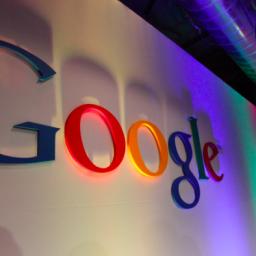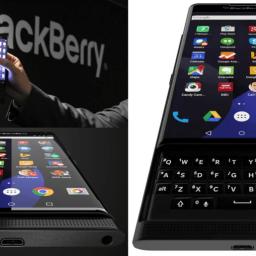
A few years ago, Google tested a new kind of "native" ad in Gmail that sat at the top of the inbox and
mostly looked like a regular email. They appear both in the mobile versions of Gmail and on the web. Now, Google is opening up these ads to all advertisers, to purchase directly from AdWords. Advertisers will be able to use the standard AdWords targeting options and work from several templates to build their own native Gmail ads that can feature single images, videos, forms, phone numbers and call-to-action buttons.
What's interesting is that these ads are made for forwarding, too, with a "forward" and "Save to Inbox" link underneath all of them. When you click on "Save to Inbox," the ad will move into your inbox and you can then treat it just like any other regular email. Google says it will continue to give users the ability to control which types of ads they see (and you can always opt out of interest-based ads, too). Google doesn't show ads in the inboxes of Google Apps for Work subscribers.
Linus has been busy toiling away on the next version of the Linux kernel, and now
version 4.2 has finally been released. It brings some goodies worth having. The ChaCha20 stream cipher and the Poly1305 authenticator (see RFC 7539) are supported, and there's a new RSA implementation. The default crypto random number generator API is now DRBG. LinuxPlanet notes that there's support for security module stacking. Linux 4.2 uses CPU execution jitter to help seed its improved random number generator, a feature called "jitter entropy RNG" on the basis that sushi should be called "cold dead fish".
The release of 4.2 comes just a few days after
the 24th birthday of Linux, announced on newsgroup comp.os.minix. It isn't an overstatement to say that the modern world runs on Linux. If you look around you, almost everything is running on Linux -- from your home router to stock exchanges. Thanks to Linux, open source has become a phenomenon that is fast becoming a norm in the enterprise and consumer segments. Fierce competitors like Google, Facebook, Yahoo!, Twitter, Red Hat, SUSE are all working together to make open source software even better.
Traveling around space can be hard and require a lot of fuel, which is part of the reason NASA has a
spacecraft concept that would hitch a free ride on one of the many comets and asteroids speeding around our solar system at 22,000 miles per hour (on the slow end). Comet Hitchhiker, developed at NASA's Jet Propulsion Laboratory, would feature a reusable tether system to replace the need for propellant for entering orbit and landing on objects.
The spacecraft would first cast an extendable tether toward the object and attach itself using a harpoon attached to the tether. Next, it would reel out the tether while applying a brake that harvests energy while the spacecraft accelerates. This allows Comet Hitchhiker to accelerate and slowly match the speed of its ride, and keeping that slight tension on the line harvests energy that is stored on-board for later use, reeling itself down to the surface of the comet or asteroid. A comet hitchhiker spacecraft can obtain
up to ~10 km/s of delta-V by using a carbon nanotube (CNT) tether, reaching the current orbital distance of Pluto (32.6 AU) in just 5.6 years.
In an open letter to T-Mobile customers with an unusually furious tone, CEO John Legere announced an
immediate crackdown on 3,000 users engaging in unauthorized tethering on "unlimited 4G LTE" data plans, calling the practice "stealing data". He claims the affected users are "hacking" and "using workarounds to conceal their tethering usage" to circumvent the 7 GB cap on tethered ("Mobile HotSpot") data, allowing them to use as much as 2 terabytes of data in a month, and this behavior "could eventually have a negative effect" on other T-Mobile customers. "Customers who continue to do this will be warned, then lose access to our Unlimited 4G LTE smartphone data plan, and be moved to an entry-level limited 4G LTE data plan."
Legere is
walking a fine line, because the FCC has been very clear that "unlimited means unlimited." FCC Enforcement Bureau Chief Travis LeBlanc said in June, "The Commission is committed to holding accountable those broadband providers who fail to be fully transparent about data limits." The commission fined AT&T $100 million for misleading mobile customers about its "unlimited" data plans, throttling data speeds after customers hit a certain data cap. Tracfone also got hit with a $40 million in January for falsely advertising its unlimited plan. Verizon had to abandoned plans to slow down 4G connection speeds for unlimited data plan customers after FCC Commissioner Tom Wheeler openly called the plan "disturbing." The FCC issued a similar notice to T-Mobile last year, which improved its notifications when it throttles unlimited plan customers.

This morning, Wikipedia parent organization Wikimedia announced
they have banned 381 user accounts that were engaging in "undisclosed paid advocacy." In other words, they were posting promotional articles to the user-editable online encyclopedia, without revealing that they were paid to do so. The articles being posted were related to businesses, business people or artists, and they often included biased or skewed information alongside unattributed material and potential copyright violations. As a result of the investigation, editors on the site have also deleted 210 articles that were created by these accounts.
Back in October 2013 Wikipedia first sent
a cease-and-desist letter to the firm Wiki-PR, which promoted its ability to help article subjects claim their "top spot in Google search results." Wikipedia said then that it banned 300 accounts associated with the firm (which argued it only had 45 people working for them.) That makes today's 381 accounts ban actually larger than the Wiki-PR scandal.
The New Horizons spacecraft - currently 3 billion miles [4.9 billion kilometers] from Earth - is just starting to transmit the bulk of the images and other data, stored on its digital recorders, from its historic July encounter with the Pluto system. Now,
NASA scientists have revealed plans to send the spacecraft on another survey mission to a distant and small Kuiper Belt object (KBO), dubbed 2014 MU69, around one billion miles away from Pluto.
Unlike asteroids, KBOs have been heated only slightly by the Sun, and are thought to represent a well preserved, deep-freeze sample of what the outer solar system was like following its birth 4.6 billion years ago. 'The detailed images and other data that New Horizons could obtain from a KBO flyby will revolutionize our understanding of the Kuiper Belt and KBOs.' A visit to the Kuiper Belt will take the spacecraft truly into the unknown. Little is understood about the mysterious dots of light that orbit out there.
It will become the first spacecraft to visit one of the icy blocks encircling our solar system in the ring of debris called the Kuiper Belt. New Horizons will perform a series of four maneuverers in late October and early November to set its course toward 2014 MU69, which it expects to reach on January 1, 2019. Any delays from those dates would cost precious fuel and add mission risk. After that, the spacecraft will continue to glide out beyond our solar system into the galaxy almost unchanged for eternity, but it will only be possible to maintain contact and perform observations with it while its nuclear power source lasts, which could be another 20 years.
There is now a public campaign to push NASA to into allocating the funds necessary to extend the New Horizons mission by writing to members of congress. Campaigners have calculated that it costs $0.15 per American per year for the New Horizons mission.
Previous story:
http://pipedot.org/2VNXOn Thursday, the Federal Communications Commission is expected to require that phone companies warn residential customers three months before they abandon a landline/copper network. The rules would
prohibit companies from retiring a copper network through neglect. Phone and cable companies would also have to warn customers with newer technologies that the phone will go out with the power, so people can get replacement alarms and backup batteries if necessary.
Many people already scoff at the idea of a landline. About 45 percent of U.S. households just use cellphones. But outside of cities, cell service can be poor. Even among households with wired phone service, about half of them have already ditched copper-based landlines for an Internet-based phone service. Estimates say that about 80 million people as well as several million small businesses still rely on traditional copper-based phone service, but the march away from copper appears inevitable.
But a home phone that relies on the Internet will go out when the power does. With copper networks, the phone line delivers its own power source and will continue to work. In addition, many home burglar alarms and medical alert systems require the copper network, so people need time to get replacements. The agency would also require that phone and cable companies sell customers backup batteries with eight hours of power. After three years, batteries would have to last 24 hours.
This coincides with the
$10.54 billion sale of all of Verizon's landline (copper & FIOS) service areas in California, Florida and Texas, to Frontier Communications. The deal which will affect millions of customers, is expected to be completed in 2016. The cash being used to fund investments in Verizon's far more profitable wireless/cellular services business.

Famed phone leaker @evleaks is at it again, this time with a few more shots of BlackBerry's forthcoming Venice handset. Venice is
a slider phone that sports a large touchscreen display and runs Android instead of Blackberry's proprietary BB10 operating system. It slides up to reveal a physical QWERTY keyboard in portrait mode, giving owners of the device the best of both worlds, or so BlackBerry hopes. The Canadian outfit has been struggling for the past several years, and is hoping Venice will change that. The company built a reputation that was based in part on excellent hardware keyboards, and though the mobile market has moved to touchscreens, there are still many users who prefer the feel of a physical plank. Venice will give users a choice between the two input methods. Venice has been "confirmed" to launch in November on all four national U.S. wireless carriers -- Verizon, AT&T, T-Mobile, and Sprint.
As one who loves BlackBerry hardware but not the software, I'm excited about the potential of a proper QWERTY phone with Android apps. Because these are leaks, the details are still up in the air. Nonetheless, it's
looking more and more likely that BlackBerry will be launching an Android phone sometime this year. It's also becoming increasingly clear that the device will probably be a slider, and that it will possibly run Google Play services.
Energy efficiency investments are widely popular because they are believed to deliver a double win: saving consumers money by reducing the amount of energy they use, while cutting climate-forcing greenhouse gas emissions and other pollutants harmful to human health. But a new study by a team of economists finds residential energy efficiency investments may not deliver on all that they promise. Through a randomized controlled trial of more than 30,000 households in Michigan - where one-quarter of the households were encouraged to make residential energy efficiency investments and received assistance - the economists find that the
costs to deploy the efficiency upgrades were about double the energy savings.
While the researchers found that the upgrades did reduce the households' energy consumption by about 10 to 20 percent each month that only translated into $2,400 in savings over the lifetime of the upgrades - half of what was originally spent to make the upgrades, and less than half of projected energy savings. "In actuality, the energy efficiency investments we evaluated delivered significantly lower savings than the models predict." Further, some say that the broader societal benefits - savings as a result of reductions in pollution from energy production- justify the investments. But the findings did not support this. The cost per ton of CO2 avoided in the sample amounted to $329, significantly larger than the $38 per ton that the federal government estimates as the social cost of carbon.
NASA robots may climb the walls of the International Space Station one day using grippers inspired by the super-adhesive feet of geckos. Scientists at the space agency's Jet Propulsion Laboratory (JPL) in Pasadena, California, are
developing a "gecko gripper" system that could help robots inspect and repair the space station's exterior, and perhaps conduct a wide range of activities in Earth orbit.
The gripping system doesn't lose its stickiness over time the way tape does, researchers added, and it should work well in all environments - even those featuring extreme temperatures, pressures and/or radiation conditions. The lizards rely on millions of tiny hairlike protrusions that become powerfully adhesive (to the electrons orbiting atoms) when bent, due to a phenomenon called van der Waals forces.
The team has already started testing out the gecko gripper in the micro-gravity environment, using the technology to grab and manipulate objects during parabolic airplane flights. The researchers have also affixed gecko-gripper feet to a climbing robot called Lemur 3, which can clamber over simulated solar panels and other spacecraft parts as a result.
Related article:
Climb der Waals with gecko-inspired grippers A few years ago, Google tested a new kind of "native" ad in Gmail that sat at the top of the inbox and mostly looked like a regular email. They appear both in the mobile versions of Gmail and on the web. Now, Google is opening up these ads to all advertisers, to purchase directly from AdWords. Advertisers will be able to use the standard AdWords targeting options and work from several templates to build their own native Gmail ads that can feature single images, videos, forms, phone numbers and call-to-action buttons.
A few years ago, Google tested a new kind of "native" ad in Gmail that sat at the top of the inbox and mostly looked like a regular email. They appear both in the mobile versions of Gmail and on the web. Now, Google is opening up these ads to all advertisers, to purchase directly from AdWords. Advertisers will be able to use the standard AdWords targeting options and work from several templates to build their own native Gmail ads that can feature single images, videos, forms, phone numbers and call-to-action buttons. 
